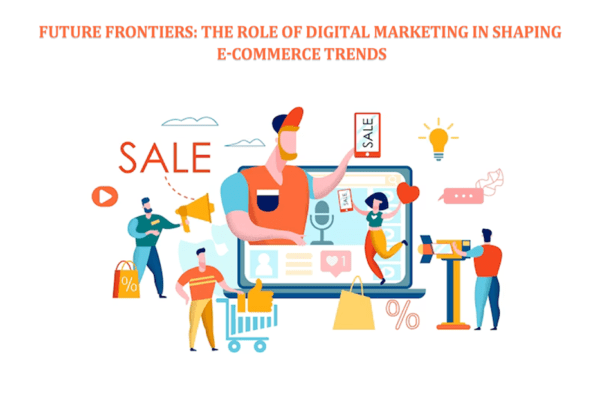Selling software is a task that requires the best sales and marketing practices. Every year new solutions arise with innovative and highly developed proposals, which makes this market increasingly competitive and demanding.
To transform your tool into an attractive option for your ideal client, it is necessary that you implement actions and strategies that contribute to their positioning and exposure, showing potential consumers that your product is a solution to their problem.
In this article, you will learn the most efficient ways to sell software and the key techniques to obtain the expected results.
Continue reading!
The importance of establishing a business process to sell software
Before delving into actions and strategies, let’s see, for sure, why a good Marketing process is so important to sell software.
It is quite common to find companies that, when launching different types of software, make some mistakes that end up compromising the reach and success of the product in the long term.
Most of the problems are related to:
- the lack of adaptation to the target audience,
- failure to identify opportunities,
- sales efforts to people who are not yet ready for the time of purchase,
- little or no support in customer service,
- Among other issues.
It was from these errors that many SaaS (Software as a Service) companies identified the need to implement better business processes, with pre-established strategies and solutions of proven effectiveness.
9 Marketing strategies for your software
To generate the first demands for software, it is essential to implement consistent and effective marketing actions.
At this point, you will see what are those good practices that will translate into new clients and business opportunities.
1. Create a solid website
The website is essential for your software to gain more visibility on the Internet and, as a consequence, win a greater number of customers.
It works as the main sales channel of your business and must gather all the information that your audience considers relevant to their purchase decision. Include aspects such as:
- your value proposition ;
- the full functionalities of your software;
- prices plans or offers;
- customer references and testimonials;
- mentions and legal conditions of use;
- contact information, such as a chat, email, or phone number;
- Efficient call-to-action to incentivize the purchase or trial of your software.
It is also very valuable to implement UX writing in the pages that talk about the software, as a means to boost product-led-growth and improve the user experience.
2. Define your Buyer Persona
For your Marketing and sales strategies to present results, it is essential that you direct your efforts towards the right audience.
In an attempt to achieve this, you can work on the concept of Buyer Persona, used by companies from the most diverse segments, especially to develop Digital Marketing actions.
Buyer Personas are semi-fictional representations of your ideal buyers.
They are built from your demographic, socioeconomic, and behavioral data, taking into account your habits, needs, and main challenges, among other aspects.
These profiles allow you to structure your strategies, adapting your language, and creating specific and segmented content so that you can reach the ideal client and, in this way, increase your conversions.
3. Build a Content Marketing strategy
Producing content of interest to your audience helps to sign your software in the digital sphere.
Once you structure a content strategy and index (with the help of SEO) pages of your corporate blog, you increase the chances that your potential clients will find you when they search for your solution in search engines.
And more: if the content is relevant, the public will feel even more confident to negotiate with your company.
When we deal with content in the field of technology, they are also an effective option to educate the public regarding the use of software and solve the main doubts about the service, resulting in a reduction in costs with attention and support.
I could not forget the SEO oriented to the public and the characteristics of these types of companies.
In addition, Content Marketing is currently one of the cheapest means to promote a business.
You can deploy this strategy through professionals who work internally in your company or, better yet, delegating the main tasks to companies specialized in the subject, with a successful and proven track record.
4. Use interactive content
If you want to overcome the barriers of Traditional Marketing, a good alternative is an interactive content.
These formats stimulate the audience, engaging them through a dynamic and participatory experience.
- calculators,
- quizzes,
- infographics,
- e-books and whitepapers with animations,
- Among others.
Interactive content attracts the attention of consumers who are increasingly overloaded with information, often without quality or relevance.
In addition, they allow the extraction of user data, since it requires the potential customer to interact and provide some type of information.
You can explore this resource to learn more about their buying power, pain, needs, and expectations.
5. Apply the Inbound methodology
Inbound Marketing aims to make the customer look at the business, rather than the company conquers the client actively.
Among other things, this methodology works a series of actions to attract the potential client to the blog or website and, from this contact, establishes a relationship through personalized and segmented content.
Attraction strategies are used exclusively to win over people who are truly interested in your solution, resulting in an audience with high conversion potential.
6. Automate your Marketing processes
Marketing automation allows you to create structured nutrition leads in, scalable way, considering the day’s buying potential customers.
Sending automatic emails, assigning or removing tags, monitoring what your customers and leads say about your brand on social networks, identifying business opportunities, are just some of the examples of the use of automation in Marketing.
With the smart help of these resources, you can increase your software sales, improve customer retention, and lower your cost of ownership.
In this complete ebook that we produced you will find more detailed information about Marketing automation and its possibilities.
7. Produce success stories and testimonials
There is nothing more effective for product sales than other buyers sharing how the solution served them well and solved their main pains.
Have you heard the saying “against facts there are no arguments”? This is how the success stories of your clients work, who will check with potential buyers how your business provides real results.
If you have a client who had a success story with the help of your solution, invite them to share their experience – either as a written testimonial or a video – and spread it on your Marketing channels.
8. Release a previous version of the software
Launching a simple preview version, also called the Minimum Viable Product, can be an excellent alternative to develop the Marketing scheme that supports your solution.
By developing a test or beta version, you will be able to foster users’ desire for your final product and confidence in your business, which helps increase sales and the success of the final launch.
In addition, you can take advantage of this moment to identify bugs, and receive feedback from the public, understand how they react to the product and what functionalities are really interesting for them.
9. Request reviews by independent auditors
Having reviews on websites that offer evaluations, rankings, and infographics about software is a way to help your business create authority in front of the consuming public.
6 Sales strategies for your software
In total, in this material, we will share 15 strategies to improve the commercialization of software.
To complete them, we will now mention some valuable actions that are more related to the tasks or responsibilities of the Sales department.
1. Define your pricing strategy
The cost of your software plays a powerful value in the purchasing decision of users, for this reason, it is essential to have a well-defined strategy fixing prices so you can meet the expectations of your audience on the cost of your solution.
One way to present alternatives to your potential customers with different purchasing powers is to offer different collection plans.
In this sense, you can work on more basic versions of your software at a lower cost and increase according to the complexity and robustness of the functionalities of your product.
Pricing by version is very common in Saas (Software as a Service) businesses.
2. Establish your competitive spreads
How can you differentiate your product from the others available on the market? Highlight what are the solutions, resources, and functionalities that you offer in a unique way or better than the competitors.
Most software users look for personalized and specialized support to meet their demands, as well as automated resources, such as the generation of reports and detailed monitoring of their results.
Analyze your audience and invest in solutions that make a difference.
For that, it is necessary to carry out a deep mapping of the competition. In this ebook of our blog, you will find information that will help you to do it and not lose sight of your competitors.
3. Explore Inbound in software sales
We have mentioned Inbound in Marketing strategies, however, this concept also has a strong impact on sales.
That’s because its purpose is to generate leads interested in your software so that, later, they become buyers.
The conversion role is in charge of the Sales team, once Marketing identifies that the lead is at the most opportune moment of the purchase journey.
Thanks to Inbound, it is possible to “take advantage” of the pain that was identified from the lead in the attraction process, increasing the possibility that it will actually become a customer.
4. Apply a freemium business model
The freemium model offers the user the possibility of using the service for free and, as they become familiar with the software, it allows them to acquire more benefits and functionalities through an upgrade to a premium plan.
Providing a free option of the software is an efficient way to attract new customers and generate future income, especially thanks to the incredible viral power that this type of business model provides.
This is because, if you offer a quality service that benefits the public, satisfaction will be shared among the community, making new users who seek efficient alternatives for their problems consider your software as a solution.
5. Use an affiliate system
The affiliate system is the process of paying commissions by promoting the products and services of companies.
In other words, it means allowing other people to promote your software and, in the event that they convert through disclosure, earn a portion of the income generated.
This model offers a great expansion of the sales force, without the need for large expenses with specialized professionals or Marketing actions.
In addition to direct sales, you can also benefit from the reach and strengthening of your brand, after all, the more people disclose to your service, the more visible your business becomes.
6. Show the ROI of your software
An efficient way to demonstrate the power of your software is by presenting in a didactic way how and what type of results it will generate for the user.
Many times, people want to see explicitly what returns they will have when investing in your product.
For these cases, you can use interactive resources, such as calculators, that allow the user to analyze their current scenario and project the results they will have when opting for your solution.
Conclusion
We have listed the main strategies so that you can sell software efficiently, implementing the best practices so that the commercialization of your solution is successful.
The key is to work the Marketing and Sales processes so that they reflect a harmonious process and that transmit confidence to the potential buyer.
We hope this article has been very useful to you.










Sustiva https://pharmacylo.com/ best pharmacy
best no prescription pharmacy https://pharmacylo.com/ Adalat
cross border pharmacy canada http://pharmacylo.com/ sex ed